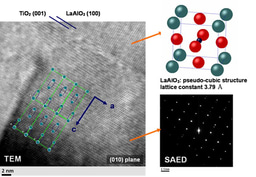Reevaluating Plate Tectonics: Addressing Theory Limitations and Advocating for Modern Updates
Published in Earth & Environment
Introduction
For nearly half a century, plate tectonics has been the prevailing framework for understanding Earth's geological processes—from explaining the drift of continents to the rise of mountain belts. Classic plate tectonic theory posits that Earth’s lithosphere is segmented into rigid plates that glide over the semi-fluid asthenosphere, with boundaries characterized by convergent, divergent, or transform faults. While this model has profoundly shaped our comprehension of seismology and crustal evolution, recent studies suggest its limitations, especially concerning Earth’s earliest dynamics and modern complexities observed along certain fault zones. A prime example lies in the North Anatolian Fault (NAF) system beneath the Marmara Sea in Turkey. Here, geophysical investigations and advanced monitoring techniques have revealed fault behaviors and crustal features that challenge traditional plate boundary assumptions. Additionally, the discovery of crust formation processes dating back more than three billion years has raised new questions about how tectonic regimes operated when Earth was significantly hotter and potentially lacking the rigid plates we see today. Integrating these revelations into a revised or expanded plate tectonic theory may not only enhance our understanding of Earth’s past but also improve seismic hazard assessment for densely populated regions along active faults worldwide.
- Historical Context: Beyond Three Billion Years
One longstanding gap in plate tectonic theory relates to Earth’s crustal evolution in the Archean Eon (4.0–2.5 billion years ago). During this period, planetary heat flow was higher, and the lithosphere may have been more ductile, suggesting that modern-style plate boundaries might not have existed (Hawkesworth & Kemp, 2006). Some researchers propose that small-scale tectonic “patches” could have merged or recycled in a manner distinct from the large, rigid plates of later eons (Hamilton, 2011). These alternate processes could have influenced the formation of ancient cratons—stable continental cores found today in regions like Australia, Canada, and South Africa. Understanding this deep-time tectonic behavior is crucial because it sheds light on how continents initially grew and how they still preserve these ancient roots. Incorporating these prehistoric processes into an updated model of plate tectonics can help explain geological phenomena observed in modern orogenic belts, cratonic margins, and deep fault systems.
- The North Anatolian Fault (NAF) and the Marmara Sea
Modern complexities are equally revealing. Spanning approximately 1,500 kilometers across northern Turkey, the NAF demarcates the boundary between the Eurasian Plate and the Anatolian microplate (Barka, 1996). Along its western extent lies the Marmara Sea—a unique tectonic setting where traditional plate boundary models offer partial explanations at best. Researchers have identified segments of the NAF below the Marmara Sea that exhibit transitional behaviors, such as slow-slip events, fault-zone fluid migration, and rapid structural changes (Bohnhoff et al., 2013). Unlike the classic depiction of a near-vertical, uniform strike-slip boundary, the Marmara region hosts a patchwork of sub-basins and variable crustal thickness, challenging the “one-fault-fits-all” perspective. This segment’s behavior also underscores that even well-defined plate boundaries can possess micro-tectonic zones governed by local factors—ranging from sedimentary basins to deep mantle influences—that deviate from the broader tectonic narrative.
- Seismic Behavior and Fault Segmentation
One of the most striking discoveries is the contrast in seismic behavior along closely spaced segments of the NAF beneath the Marmara Sea. The western portion is known for aseismic creep, where tectonic stress dissipates gradually, significantly reducing the likelihood of large earthquakes. In contrast, the eastern segment, particularly near Istanbul, appears fully locked and accumulates strain over time. When enough stress accumulates, the region becomes prone to significant seismic events (Cakir & Erdik, 2004). This stark variability within a short spatial range highlights a central limitation of classical plate tectonics: the assumption that plate boundaries behave uniformly. Instead, local geology, fluid pressures, and strain-partitioning processes can drive contrasting fault behaviors. For seismic hazard assessments, failing to account for these localized complexities risks underestimating or mischaracterizing potential earthquake scenarios, particularly in heavily urbanized corridors like Istanbul.
- Crustal Thickness Variations
Another challenge to traditional plate tectonic models in the Marmara Sea region is the notable variation in crustal thickness. High-resolution geophysical surveys, including seismic reflection and tomography, reveal lateral changes in crustal composition and thickness that cannot be explained by a simple “rigid plate” concept (Barka, 1996; Lay & Wallace, 1995). These variations point to a history of rifting, basin formation, and magmatic or metamorphic processes that operate at different scales. Deeper mantle convection or lithospheric delamination could also be influencing the region’s tectonic fabric. Such heterogeneities can affect how stress propagates through the crust and, by extension, how seismic energy might release during fault rupture. Recognizing these crustal discontinuities is vital for building more accurate 3D models of fault systems—models that can capture the interplay between shallow sedimentary structures and deeper lithospheric processes.
- Episodic Tremor and Slip (ETS) Events
Traditionally associated with subduction zones in regions like Cascadia (Canada/USA) and southwest Japan, Episodic Tremor and Slip (ETS) events are now being documented in strike-slip environments such as the Marmara region. Characterized by prolonged, low-frequency tremors and slow fault slip, ETS can release seismic energy over days or weeks, rather than the seconds or minutes typical of earthquakes (Cua & Heaton, 2007). Although not as dramatically destructive as major quakes, ETS signals complex fault mechanics and stress regimes that go beyond conventional seismology’s “locked or creeping” classification. In Marmara, detecting ETS-like signals hints that deeper, possibly fluid-rich fault segments intermittently relieve stress. This phenomenon challenges the binary notion of faults as either fully locked or steadily creeping, supporting the argument that plate tectonics should evolve to encapsulate these subtler patterns of crustal deformation.
- Implications for Seismic Hazard Assessment
These regional idiosyncrasies underscore the practical importance of refining plate tectonics, particularly for seismic hazard evaluations in urban zones like Istanbul. Relying solely on an overarching plate boundary framework may misjudge the seismic potential along complex fault segments. In response, some researchers advocate for more integrated approaches—combining high-density seismic monitoring (Bohnhoff et al., 2013), InSAR (Interferometric Synthetic Aperture Radar) data, and machine-learning algorithms that can detect patterns in microseismicity or slow-slip events (DeVries et al., 2018). Such methodologies yield a finer-scale view of stress accumulation, slip rates, and structural anomalies. As a result, policymakers and engineers can develop more robust earthquake preparedness plans, from strengthening building codes to situating critical infrastructure away from the most active segments. Embracing a revised or expanded tectonic model that accommodates these complexities ultimately leads to more accurate hazard forecasts and better-informed public safety strategies.
- Conclusion and Future Directions
The tectonic peculiarities of the Marmara region—and the broader question of Earth’s ancient lithospheric dynamics—illuminate the need to reconsider and refine plate tectonics. Incorporating advanced geophysical tools, from seismic tomography to remote sensing, allows us to capture the micro- and macro-scale processes shaping our planet’s crust. By recognizing aseismic creep, crustal heterogeneities, ETS events, and ancient tectonic styles, geologists can construct a theory that better mirrors reality. Such a nuanced view holds immense value for seismic hazard mitigation, granting policymakers and communities the insight needed to manage geological risks in an ever-shifting Earth.
References:
- Barka, A. A. (1996). Slip distribution along the North Anatolian Fault associated with large earthquakes of the period 1939 to 1967. Bulletin of the Seismological Society of America, 86(5), 1238–1254.
- Bohnhoff, M., Martínez-Garzón, P., Bulut, F., Stierle, E., & Ben-Zion, Y. (2013). Maximum earthquake magnitudes along different sections of the North Anatolian Fault Zone. Tectonophysics, 674, 147–165.
- Cakir, Z., & Erdik, M. (2004). Seismicity and earthquake hazard in Istanbul. Tectonophysics, 391(1–4), 311–326.
- Cua, G., & Heaton, T. H. (2007). The Virtual Seismologist (VS) method: A Bayesian approach to earthquake early warning. Bulletin of the Seismological Society of America, 97(4), 1209–1229.
- DeVries, P. M. R., Viégas, F., Wattenberg, M., & Meade, B. J. (2018). Deep learning of aftershock patterns following large earthquakes. Nature, 560(7719), 632–634.
- Hamilton, W. B. (2011). Plate tectonics began in Neoproterozoic time, and plumes from deep mantle have never operated. Lithos, 123(1–4), 1–20.
- Hawkesworth, C. J., & Kemp, A. I. S. (2006). Evolution of the continental crust. Nature, 443(7113), 811–817.
- Lay, T., & Wallace, T. C. (1995). Modern Global Seismology. Academic Press.





Please sign in or register for FREE
If you are a registered user on Research Communities by Springer Nature, please sign in